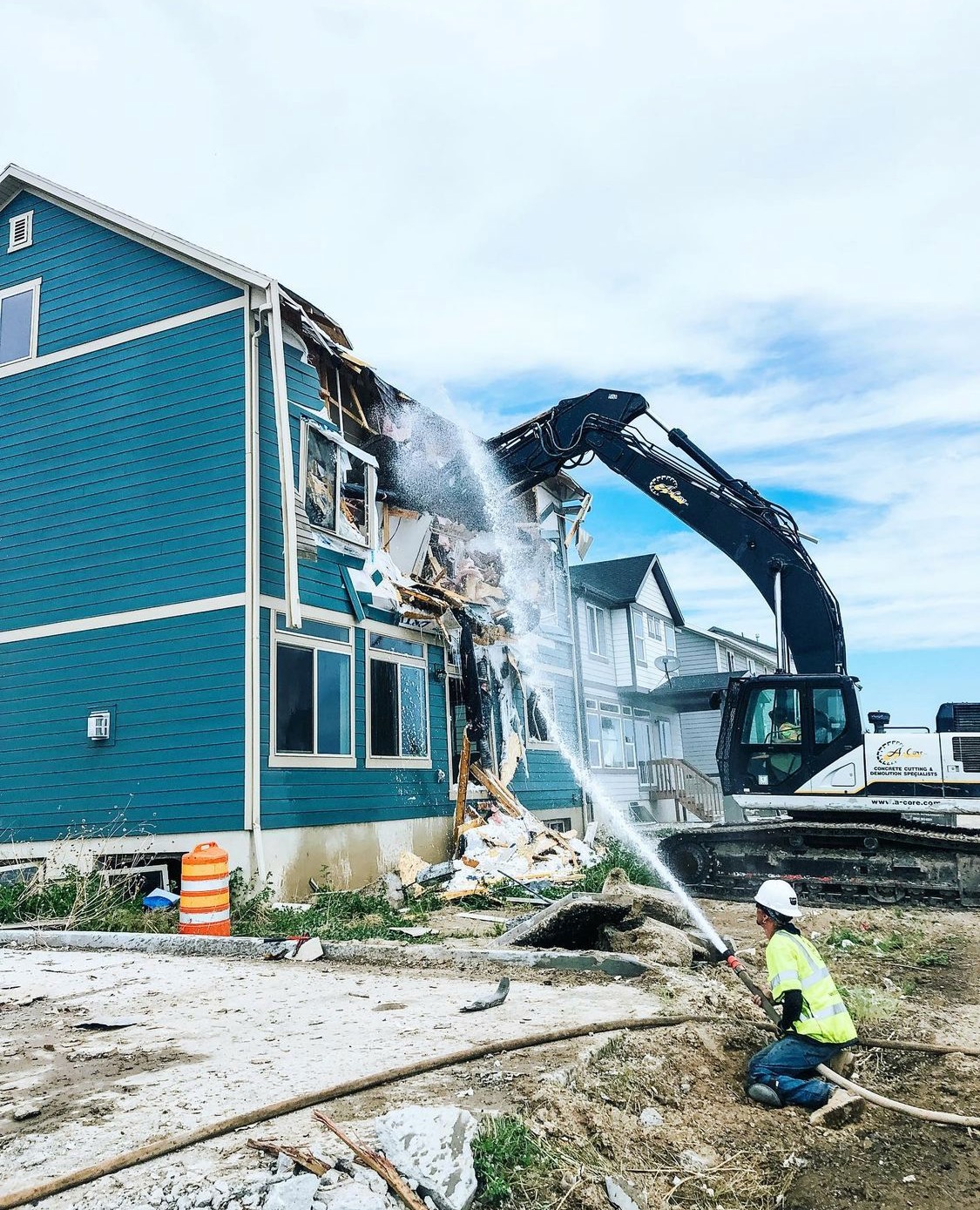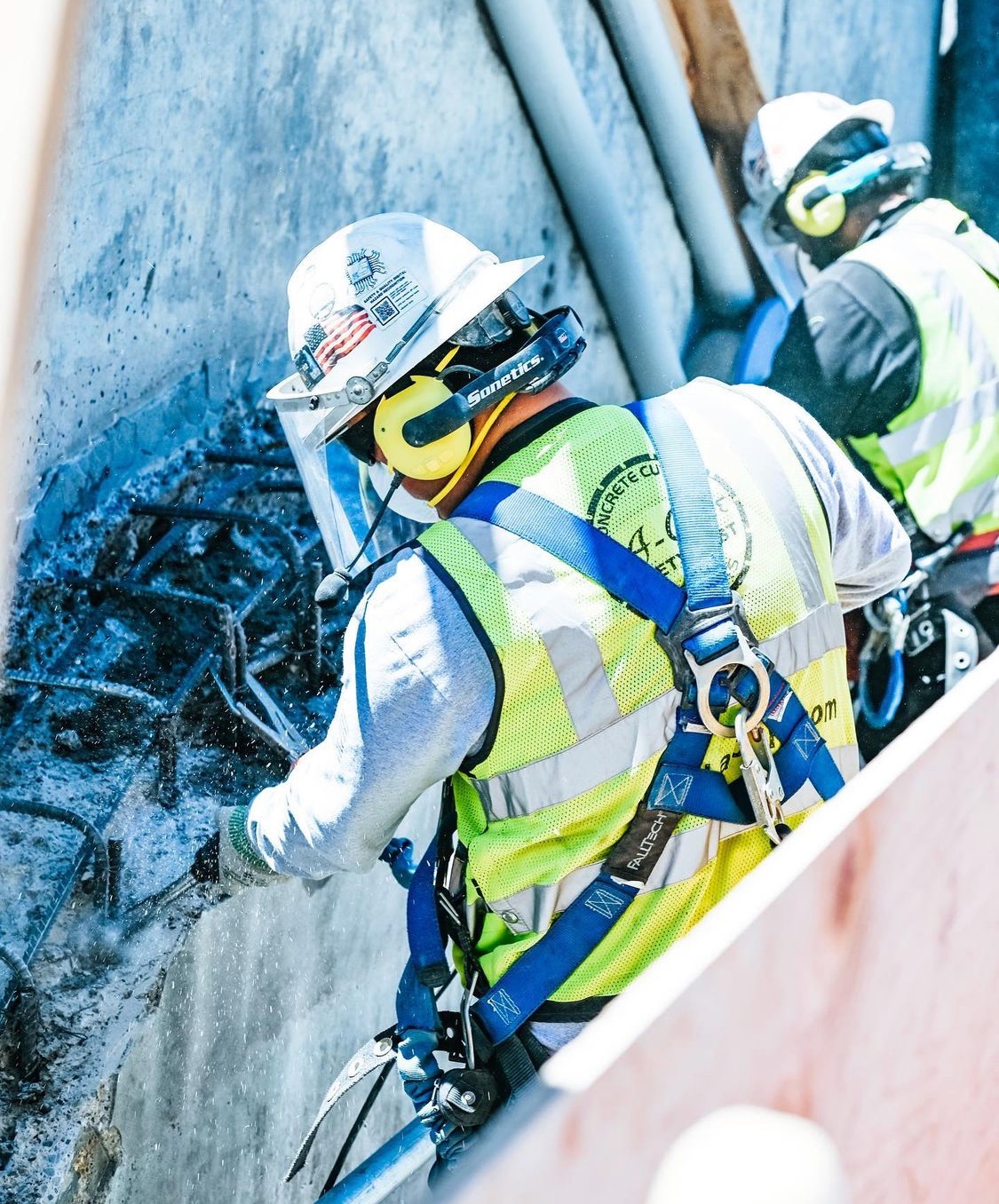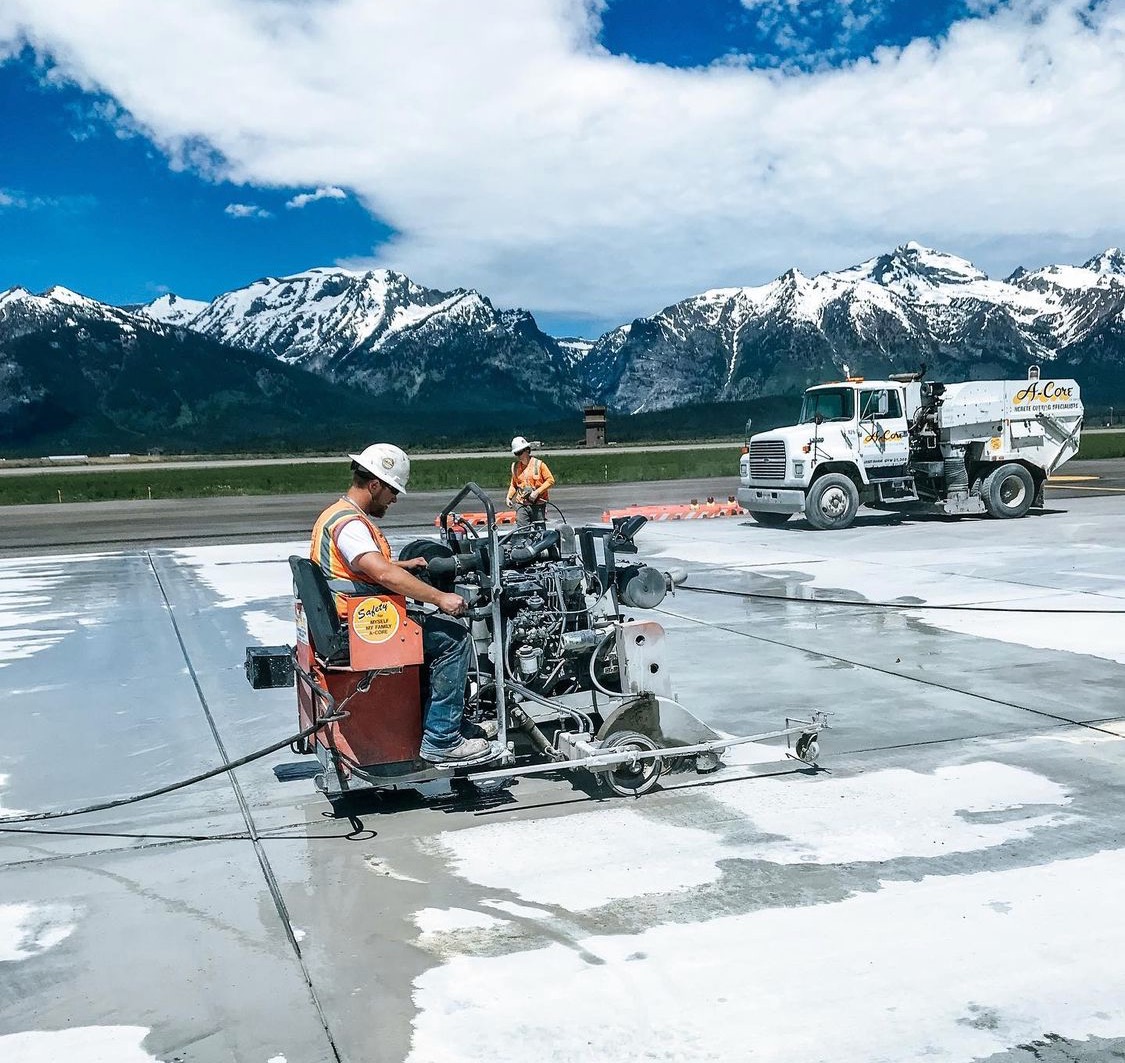Information
-
Branch / Division:
-
A-Core Job Number:
-
Customer:
-
Job Name:
-
Job Address:
-
Project Manager/Supervisor:
-
Conducted on:
-
Prepared by:
Introduction
-
This inspection/audit has been undertaken by A-Core's Safety Department. The purpose of the inspection/audit is to ensure the Demolition Division's compliance with the Health and Safety at Work Act 1974 and any relevant subordinate legislation, including but not restricted to, the Management of Health and Safety at Work Regulations 1999, BS 6187: 2011, the Construction (Design & Management) Regulations 2007, the Control of Asbestos Regulations 2012 and the Working at Heights Regulations 2005. The report aims to identify any areas where A-Core Demo Division needs to improve to meet the requirements of all relevant health and safety regulations and industry best practice procedures.
Site general information
-
Location type
- Industrial
- Commercial
- Residential
- Rural
-
Demolition or refurbishment
- Demolition
- Refurbishment/soft strip
-
Demolition structure type
- General Demolition
- Tower Block Deconstruction
- Stressed Concrete Structure
- Reinforced Concrete Structure
- Chimney Demolition
- Bridge Demolition
- Industrial Dismantling
- Shoring & Facade Retention
- Asbestos Removal
- Site Clearance & Excavation
-
How many floors does the structure have
- 1
- 2
- 3
- 4
- 5
- more than 5
-
Are there any subcontractors (other contractors) on site
-
Asbestos removal
-
Salvage team
1. Site
-
Site entrance
-
Access/Egress
- Safe / Compliant
- Level 1 Failure - Must be corrected ASAP
- Level 2 Failure - Must be corrected within 2 weeks
- Level 3 Failure - Must be corrected immediately
- N/A
-
Site Tidiness
- Safe / Compliant
- Level 1 Failure - Must be corrected ASAP
- Level 2 Failure - Must be corrected within 2 weeks
- Level 3 Failure - Must be corrected immediately
- N/A
-
Signage Displayed
- Safe / Compliant
- Level 1 Failure - Must be corrected ASAP
- Level 2 Failure - Must be corrected within 2 weeks
- Level 3 Failure - Must be corrected immediately
- N/A
-
Leading Edges/Openings/Falls from Height
- Safe / Compliant
- Level 1 Failure - Must be corrected ASAP
- Level 2 Failure - Must be corrected within 2 weeks
- Level 3 Failure - Must be corrected immediately
- N/A
-
Lighting
- Safe / Compliant
- Level 1 Failure - Must be corrected ASAP
- Level 2 Failure - Must be corrected within 2 weeks
- Level 3 Failure - Must be corrected immediately
- N/A
-
Toilets
- Safe / Compliant
- Level 1 Failure - Must be corrected ASAP
- Level 2 Failure - Must be corrected within 2 weeks
- Level 3 Failure - Must be corrected immediately
- N/A
-
Pedestrian Segregation
- Safe / Compliant
- Level 1 Failure - Must be corrected ASAP
- Level 2 Failure - Must be corrected within 2 weeks
- Level 3 Failure - Must be corrected immediately
- N/A
-
Safe Working Area/Exclusion Zone
- Safe / Compliant
- Level 1 Failure - Must be corrected ASAP
- Level 2 Failure - Must be corrected within 2 weeks
- Level 3 Failure - Must be corrected immediately
- N/A
-
Safe Working Area/Exclusion Zone
-
Asbestos Removal
1. First Aid
-
First Aid Box
- Safe / Compliant
- Level 1 Failure - Must be corrected ASAP
- Level 2 Failure - Must be corrected within 2 weeks
- Level 3 Failure - Must be corrected immediately
- N/A
-
Supply's adequate for manpower
- Safe / Compliant
- Level 1 Failure - Must be corrected ASAP
- Level 2 Failure - Must be corrected within 2 weeks
- Level 3 Failure - Must be corrected immediately
- N/A
2. PPE
-
Hard Hats worn by all personnel
- Safe / Compliant
- Level 1 Failure - Must be corrected ASAP
- Level 2 Failure - Must be corrected within 2 weeks
- Level 3 Failure - Must be corrected immediately
- N/A
-
Safety Glasses worn by all personnel
- Safe / Compliant
- Level 1 Failure - Must be corrected ASAP
- Level 2 Failure - Must be corrected within 2 weeks
- Level 3 Failure - Must be corrected immediately
- N/A
-
Hearing Protection worn by all personnel exposed to high noise levels
- Safe / Compliant
- Level 1 Failure - Must be corrected ASAP
- Level 2 Failure - Must be corrected within 2 weeks
- Level 3 Failure - Must be corrected immediately
- N/A
-
Hand Protection worn as required
- Safe / Compliant
- Level 1 Failure - Must be corrected ASAP
- Level 2 Failure - Must be corrected within 2 weeks
- Level 3 Failure - Must be corrected immediately
- N/A
-
Proper foot protection worn by all personnel
- Safe / Compliant
- Level 1 Failure - Must be corrected ASAP
- Level 2 Failure - Must be corrected within 2 weeks
- Level 3 Failure - Must be corrected immediately
- N/A
-
High Visibility Vests worn by all personnel
- Safe / Compliant
- Level 1 Failure - Must be corrected ASAP
- Level 2 Failure - Must be corrected within 2 weeks
- Level 3 Failure - Must be corrected immediately
- N/A
-
Respirator or Dust Masks worn by personnel exposed to silica dust
- Safe / Compliant
- Level 1 Failure - Must be corrected ASAP
- Level 2 Failure - Must be corrected within 2 weeks
- Level 3 Failure - Must be corrected immediately
- N/A
-
Adequate PPE on site
- Safe / Compliant
- Level 1 Failure - Must be corrected ASAP
- Level 2 Failure - Must be corrected within 2 weeks
- Level 3 Failure - Must be corrected immediately
- N/A
3. Fire Prevention
-
Fire Extinguishers compliant
- Safe / Compliant
- Level 1 Failure - Must be corrected ASAP
- Level 2 Failure - Must be corrected within 2 weeks
- Level 3 Failure - Must be corrected immediately
- N/A
-
Documented Fire Plan
- Safe / Compliant
- Level 1 Failure - Must be corrected ASAP
- Level 2 Failure - Must be corrected within 2 weeks
- Level 3 Failure - Must be corrected immediately
- N/A
-
Emergency muster point
- Safe / Compliant
- Level 1 Failure - Must be corrected ASAP
- Level 2 Failure - Must be corrected within 2 weeks
- Level 3 Failure - Must be corrected immediately
- N/A
4. Services
-
Utility Locate Services Required
-
All utilities have been marked appropriately prior to any excavation work
- Safe / Compliant
- Level 1 Failure - Must be corrected ASAP
- Level 2 Failure - Must be corrected within 2 weeks
- Level 3 Failure - Must be corrected immediately
- N/A
-
Utility Locate ticket available
- Safe / Compliant
- Level 1 Failure - Must be corrected ASAP
- Level 2 Failure - Must be corrected within 2 weeks
- Level 3 Failure - Must be corrected immediately
- N/A
-
Utility Locate ticket current
- Safe / Compliant
- Level 1 Failure - Must be corrected ASAP
- Level 2 Failure - Must be corrected within 2 weeks
- Level 3 Failure - Must be corrected immediately
- N/A
-
Disconnection Certificates in Possession
- Safe / Compliant
- Level 1 Failure - Must be corrected ASAP
- Level 2 Failure - Must be corrected within 2 weeks
- Level 3 Failure - Must be corrected immediately
- N/A
-
Service Drawings on Site
- Safe / Compliant
- Level 1 Failure - Must be corrected ASAP
- Level 2 Failure - Must be corrected within 2 weeks
- Level 3 Failure - Must be corrected immediately
- N/A
5. Hand Tools
-
All tools are inspected before use
- Safe / Compliant
- Level 1 Failure - Must be corrected ASAP
- Level 2 Failure - Must be corrected within 2 weeks
- Level 3 Failure - Must be corrected immediately
- N/A
-
110v power tools
- Safe / Compliant
- Level 1 Failure - Must be corrected ASAP
- Level 2 Failure - Must be corrected within 2 weeks
- Level 3 Failure - Must be corrected immediately
- N/A
-
Extension leads
- Safe / Compliant
- Level 1 Failure - Must be corrected ASAP
- Level 2 Failure - Must be corrected within 2 weeks
- Level 3 Failure - Must be corrected immediately
- N/A
-
Air powered tools
- Safe / Compliant
- Level 1 Failure - Must be corrected ASAP
- Level 2 Failure - Must be corrected within 2 weeks
- Level 3 Failure - Must be corrected immediately
- N/A
-
Whip checks
- Safe / Compliant
- Level 1 Failure - Must be corrected ASAP
- Level 2 Failure - Must be corrected within 2 weeks
- Level 3 Failure - Must be corrected immediately
- N/A
-
Damaged tools tagged accordingly
- Safe / Compliant
- Level 1 Failure - Must be corrected ASAP
- Level 2 Failure - Must be corrected within 2 weeks
- Level 3 Failure - Must be corrected immediately
- N/A
-
Operators Trained on equipment
- Safe / Compliant
- Level 1 Failure - Must be corrected ASAP
- Level 2 Failure - Must be corrected within 2 weeks
- Level 3 Failure - Must be corrected immediately
- N/A
6. Heavy Equipment on Site
-
Daily Equipment Inspections
- Safe / Compliant
- Level 1 Failure - Must be corrected ASAP
- Level 2 Failure - Must be corrected within 2 weeks
- Level 3 Failure - Must be corrected immediately
- N/A
-
LOTO procedures followed
- Safe / Compliant
- Level 1 Failure - Must be corrected ASAP
- Level 2 Failure - Must be corrected within 2 weeks
- Level 3 Failure - Must be corrected immediately
- N/A
-
Lifting Equipment - Crane, Telehandler, Excavator, Skid Steer, etc.
- Safe / Compliant
- Level 1 Failure - Must be corrected ASAP
- Level 2 Failure - Must be corrected within 2 weeks
- Level 3 Failure - Must be corrected immediately
- N/A
-
Rigging, Picking, and Lifting Operations
- Safe / Compliant
- Level 1 Failure - Must be corrected ASAP
- Level 2 Failure - Must be corrected within 2 weeks
- Level 3 Failure - Must be corrected immediately
- N/A
-
Equipment Operators Certified
- Safe / Compliant
- Level 1 Failure - Must be corrected ASAP
- Level 2 Failure - Must be corrected within 2 weeks
- Level 3 Failure - Must be corrected immediately
- N/A
-
Riggers Certified
- Safe / Compliant
- Level 1 Failure - Must be corrected ASAP
- Level 2 Failure - Must be corrected within 2 weeks
- Level 3 Failure - Must be corrected immediately
- N/A
8. Scaffold & Access Equipment
-
Scaffold/MEWPS/Boom Lift Inspections documented
- Safe / Compliant
- Level 1 Failure - Must be corrected ASAP
- Level 2 Failure - Must be corrected within 2 weeks
- Level 3 Failure - Must be corrected immediately
- N/A
-
MEWPS/Powered Elevation Access used
-
Operator certified/competent
- Safe / Compliant
- Level 1 Failure - Must be corrected ASAP
- Level 2 Failure - Must be corrected within 2 weeks
- Level 3 Failure - Must be corrected immediately
- N/A
-
Safe work habits
- Safe / Compliant
- Level 1 Failure - Must be corrected ASAP
- Level 2 Failure - Must be corrected within 2 weeks
- Level 3 Failure - Must be corrected immediately
- N/A
-
Scaffold used
-
All guarding (toe kick, mid rail, top rail) compliant
- Safe / Compliant
- Level 1 Failure - Must be corrected ASAP
- Level 2 Failure - Must be corrected within 2 weeks
- Level 3 Failure - Must be corrected immediately
- N/A
-
Fall protection. If working above 10'
- Safe / Compliant
- Level 1 Failure - Must be corrected ASAP
- Level 2 Failure - Must be corrected within 2 weeks
- Level 3 Failure - Must be corrected immediately
- N/A
-
Integrity ties, pins, bracing compliant
- Safe / Compliant
- Level 1 Failure - Must be corrected ASAP
- Level 2 Failure - Must be corrected within 2 weeks
- Level 3 Failure - Must be corrected immediately
- N/A
-
Netting & Monoflex
- Safe / Compliant
- Level 1 Failure - Must be corrected ASAP
- Level 2 Failure - Must be corrected within 2 weeks
- Level 3 Failure - Must be corrected immediately
- N/A
-
Ladders or Stairs
- Safe / Compliant
- Level 1 Failure - Must be corrected ASAP
- Level 2 Failure - Must be corrected within 2 weeks
- Level 3 Failure - Must be corrected immediately
- N/A
9. Waste & Recycling
-
SWWP
- Safe / Compliant
- Level 1 Failure - Must be corrected ASAP
- Level 2 Failure - Must be corrected within 2 weeks
- Level 3 Failure - Must be corrected immediately
- N/A
-
Legal slurry disposal methods
- Safe / Compliant
- Level 1 Failure - Must be corrected ASAP
- Level 2 Failure - Must be corrected within 2 weeks
- Level 3 Failure - Must be corrected immediately
- N/A
-
Legal dump site
- Safe / Compliant
- Level 1 Failure - Must be corrected ASAP
- Level 2 Failure - Must be corrected within 2 weeks
- Level 3 Failure - Must be corrected immediately
- N/A
-
Loads covered during transport
- Safe / Compliant
- Level 1 Failure - Must be corrected ASAP
- Level 2 Failure - Must be corrected within 2 weeks
- Level 3 Failure - Must be corrected immediately
- N/A
-
Recycling
10. Task Sheet
-
Tool Box Talks weekly & JHA's daily
- Safe / Compliant
- Level 1 Failure - Must be corrected ASAP
- Level 2 Failure - Must be corrected within 2 weeks
- Level 3 Failure - Must be corrected immediately
- N/A
-
Permits current
- Safe / Compliant
- Level 1 Failure - Must be corrected ASAP
- Level 2 Failure - Must be corrected within 2 weeks
- Level 3 Failure - Must be corrected immediately
- N/A
-
Daily Paperwork/diary/checklist
- Safe / Compliant
- Level 1 Failure - Must be corrected ASAP
- Level 2 Failure - Must be corrected within 2 weeks
- Level 3 Failure - Must be corrected immediately
- N/A
11. Documents
-
Site Logistics Plan
- Safe / Compliant
- Level 1 Failure - Must be corrected ASAP
- Level 2 Failure - Must be corrected within 2 weeks
- Level 3 Failure - Must be corrected immediately
- N/A
-
Training Records
- Safe / Compliant
- Level 1 Failure - Must be corrected ASAP
- Level 2 Failure - Must be corrected within 2 weeks
- Level 3 Failure - Must be corrected immediately
- N/A
-
Information Posters
- Safe / Compliant
- Level 1 Failure - Must be corrected ASAP
- Level 2 Failure - Must be corrected within 2 weeks
- Level 3 Failure - Must be corrected immediately
- N/A
-
Information posters
-
Insurance Certificates
-
Policy Statements
13. Subcontractor Works
-
Correct PPE for tasks
- Safe / Compliant
- Level 1 Failure - Must be corrected ASAP
- Level 2 Failure - Must be corrected within 2 weeks
- Level 3 Failure - Must be corrected immediately
- N/A
-
Qualified Operatives
- Safe / Compliant
- Level 1 Failure - Must be corrected ASAP
- Level 2 Failure - Must be corrected within 2 weeks
- Level 3 Failure - Must be corrected immediately
- N/A
-
Safe System of Work
- Safe / Compliant
- Level 1 Failure - Must be corrected ASAP
- Level 2 Failure - Must be corrected within 2 weeks
- Level 3 Failure - Must be corrected immediately
- N/A
14. Comments / Observations / Workforce Feedback
-
undefined
15. Advice
-
undefined
16. Actions
-
undefined
















